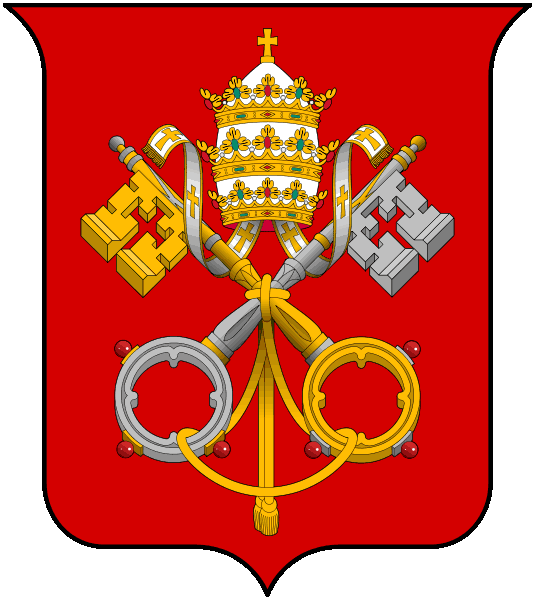The Pope is the leader of the worldwide Catholic Church and the Bishop of Rome. He rules the smallest state in the world – Stato della Città del Vaticano, “Vatican City State” – the Vatican City, which is surrounded by the city of Rome. The name of the city/state comes from the Vatican Hill on which it is built.

The reigning Pope took a hand (by messengers) in Arthur’s affairs, as in the affairs of other kings, often enough that he must be recognized both as a force and as a character – or perhaps, since Pope follows Pope as more than one character – in the Arthurian saga.
Popes named during the Arthurian period in legend include Sulpicius (probably Simplicius), who Gawain served; Romanus, who sent bishops to Britain during the reign of Vortimer; Leo, who served during Arthur’s war with Rome; Dionido, whose brother, Trionoro, killed Gawain; and Gregorio, who tried Merlin for heresy.
In the Vulgate Mort Artu and its adaptions, the pope (unnamed), through the Bishop of Rochester, forces Arthur to restore Guinevere as queen after she runs away with Lancelot, threatening to place Arthur’s lands under interdiction if he does not – the Pope’s command reaching them while Arthur besieged them in Joyous Garde. Arthur complies.
For instance, it was the Pope who ordered Arthur to be reconciled with Guenevere in the matter of “the false Guenevere”.
In Malory, the pope crowns Arthur emperor of Rome after the Roman War.
was crowned emperor by the pope's hand, with all the royalty that could be made, and sojourned [in Rome] a time.
In the same story, Pedyvere, who murdered his wife, was sent to the pope after Lancelot defeated him.
During the traditional Arthurian period, the following popes can be found in the historical records:
- St. Leo I | 440-461
- St. Hilary | 461-468
- St. Simplicius | 468-483
- St. Felix III | 483-492
- St. Gelasius I | 492-496
- Anastasius II | 496-498
- St. Symmachus | 498-514 (anti-pope c. 498-505)
- Laurence | 498-506/508
- St. Hormisdas | 514-523
- St. John I | 523-526
- St. Felix IV | 526-530
See also
Bertholai | The Legend of King Arthur
Dionido | The Legend of King Arthur
Elutherius | The Legend of King Arthur
Genievre | The Legend of King Arthur
Gregorio | The Legend of King Arthur
Saint Peter | The Legend of King Arthur
Romanus | The Legend of King Arthur
Turinoro | The Legend of King Arthur
Image credit
Coat of Arms of the Holy See | Artist: Unknown | Source: Wikipedia
Sources
Historia Regum Britanniae | Geoffrey of Monmouth, c. 1138
Brut | Layamon, late 12th century to mid-13th century
Vulgate Mort Artu | 1215-1230
La Tavola Ritonda | 1325–1350
Vita di Merlino con le Sue Profetie | c. 1480
Le Morte Darthur | Sir Thomas Malory, 1469-1470
